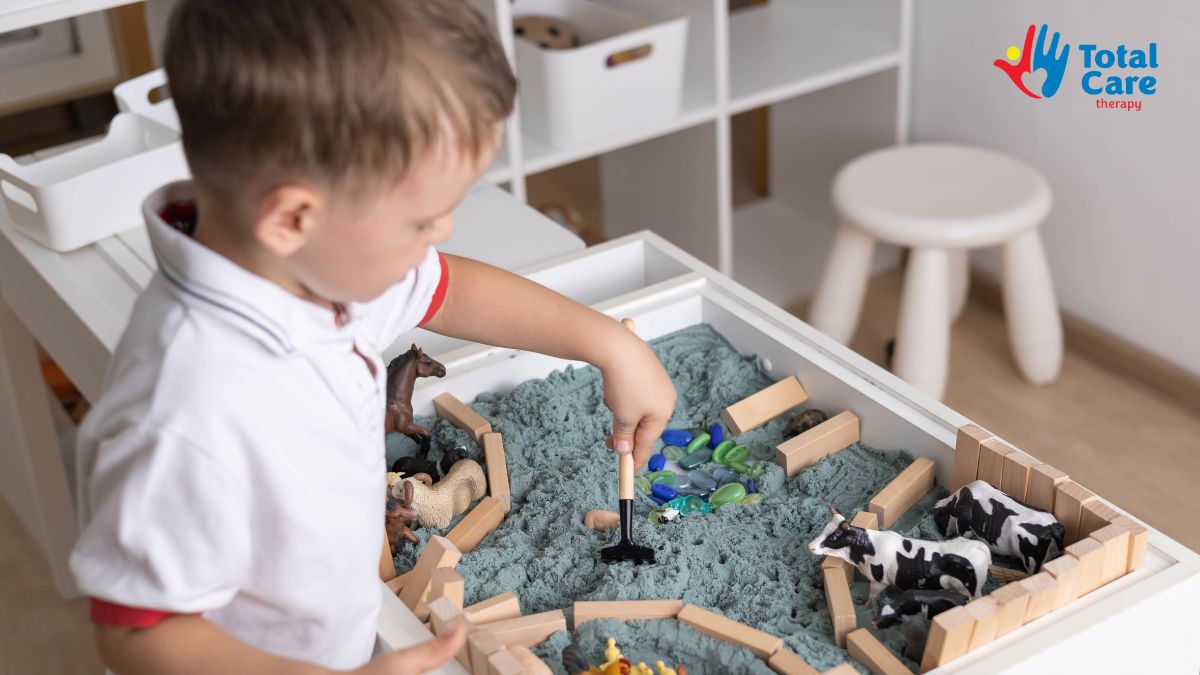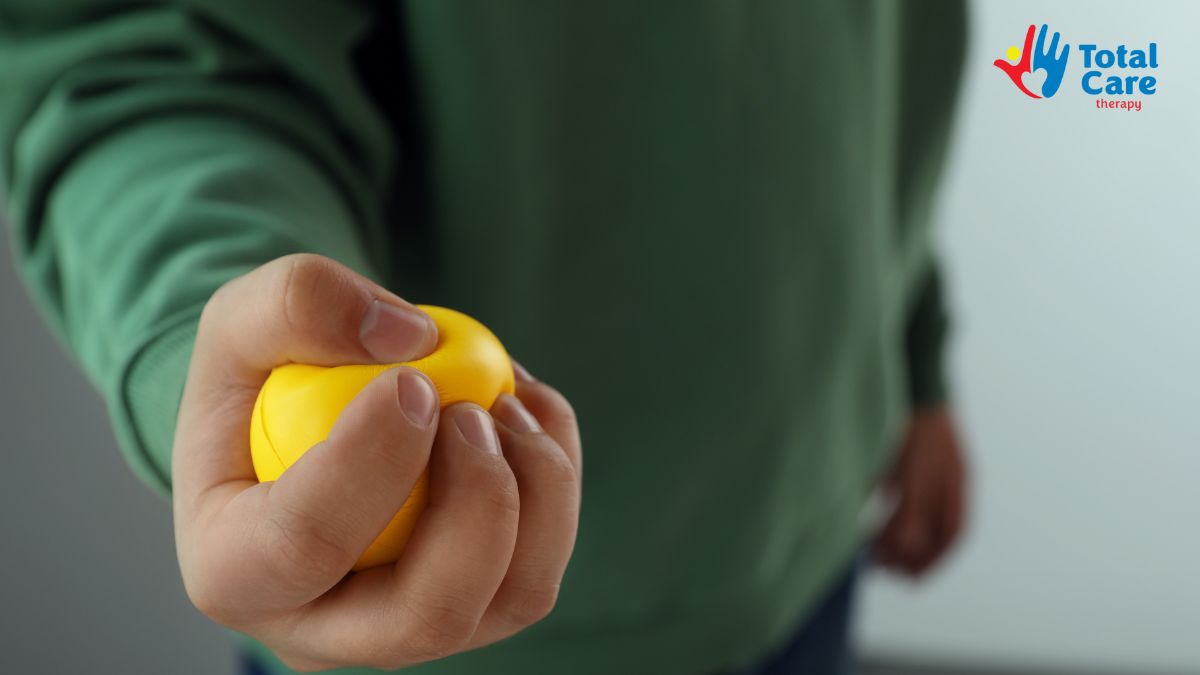ABA and Proprioceptive Activities for Autism: Structured Ideas for Sensory Seekers
ABA and proprioceptive activities for autism combine structured sensory input with behavior goals to improve focus, calm, and learning. Build balanced sessions.
ABA and Proprioceptive Activities for Autism: Structured Ideas for Sensory Seekers
Key Points:
- ABA and proprioceptive activities for autism work best when structured together to meet sensory needs and improve learning.
- Planned heavy work, such as wall pushes, carrying bins, or trampoline jumps, regulates the body, increases attention, and reduces meltdowns.
- Scheduling input every 10–15 minutes helps sensory seekers stay calm and engaged.
Many autistic kids who crave movement or pressure can complete ABA programs, but sessions get bumpy when their sensory system is “underfed.” ABA and proprioceptive activities for autism give these sensory seekers the input they look for, inside a plan that still teaches communication, play, and self-help.
Families who learn how to slot heavy work before or after hard ABA tasks usually report faster warm-up, fewer tears, and better carryover. Below is a structured way to do it without turning the session into pure sensory play.

Why Sensory Seekers Need Structure Inside ABA
Rates of autism are now about 1 in 31 U.S. children, so more learners come to ABA with clear sensory processing differences. When almost every session starts with wiggling, crashing, or mouthing, therapists must plan proprioceptive sensory input instead of reacting to it.
Sensory diets from OT already show that regular input can help attention, emotional control, and task follow-through. Similar patterns appear in sensory issues in autism.
Sensory seekers look for:
- Strong movement and pressure. They push, jump, or hug hard because proprioceptive sensory seeking behaviors help them feel “organized.”
- Repetition. They want the same heavy input several times in one session.
- Fast access. If ABA tasks feel too quiet or fine-motor, they chase input elsewhere.
ABA teams can keep the teaching structure and still feed the system. The trick is to treat proprioceptive stimulation like any other antecedent strategy: planned, timed, and tied to the goal that comes next.
How ABA and Proprioceptive Activities for Autism Work Together
ABA already looks at what happens before a behavior. Proprioceptive sensory input is a powerful “before” strategy because research on deep pressure in autistic youth shows calmer affect and, in many cases, improved attention right after input. This aligns with findings on proprioception and autism.
So instead of giving a random squeeze when a child cries, the therapist schedules input 2–3 minutes before a hard demand. Here is how the pairing works:
- Prime for instruction. Do wall pushes, animal walks, or carrying bins right before table work.
- Re-regulate after success. Give a crash pad jump or therapy ball squeeze after the task to keep arousal steady.
- Fade to self-requesting. Teach the learner to mand for “squeeze,” “push,” or “heavy work” so they do not show problem behavior to get input.
This pairing supports many ABA targets:
- Attending and imitation improve because the body is calmer.
- Transitions look smoother because the child got the proprioceptive input examples they were craving.
- Functional communication grows because the sensory activity itself becomes a reinforcer.
When families ask “What are proprioceptive activities?” the answer should connect straight to session goals. We use them to get more learning minutes and not only to fill time.
Sample Structured Proprioceptive Schedule Inside an ABA Session
A structured schedule keeps sensory seekers from “chasing input” all session. It also makes data cleaner, because you know the child had the same warm-up each time. Sensory processing differences show up in at least 69% of autistic kids, so a predictable plan helps most clients, not just the most active ones.
Warm-Up Block (3–5 minutes):
- Wall Pushes: Do 10–15 pushes against the wall. Short, strong pressure through the joints.
- Animal Walks: Bear walk to the table, then crab walk back.
- Therapy Ball Roll-Over: Child lies on tummy and adult rolls the ball over legs and back with moderate pressure.
Work–Sensory Cycle (every 10–15 minutes):
- Instruction: Run DTT, matching, or language programs.
- Quick Heavy Work: Carry books to a shelf, push a weighted laundry basket, or do chair push-ups.
- Return to Work: Start the next ABA target while regulation is still high.
Transition/Wrap-Up:
- Deep Pressure Hug or Squeeze Toy
- Jump on Mini-Trampoline 20–30 counts
- Calm Table Task like put-in or simple puzzle.
This schedule gives frequent proprioceptive sensory input without taking over the ABA plan. It follows the same logic as proprioceptive input activities for sensory support, so parents see the same pattern at home

Which ABA Goals Improve After Proprioceptive Input?
Sensory-fed kids respond better to teaching. ABA therapy that supports skill building often places language, fine-motor, or play goals right after regulation.
A large body of OT and sensory work shows that when the nervous system is regulated, attention and participation rise. ABA teams can prioritize the following right after heavy work:
- Following multi-step directions: Proprioceptive input can lower sensory noise, so kids can listen longer.
- Fine-motor or table tasks: After pushing or carrying, hands are calmer and sitting is easier.
- Social/play programs: Sports-style and movement-rich activities have shown gains in social engagement for autistic children, so pair your joint play targets here.
- Behavior reduction plans: Many self-stim behaviors have a sensory piece. Giving planned proprioceptive sensory input first can lower the need for high-force stims.
One study on sensory symptoms in autism reported ranges as high as 69–93%, which explains why so many problem behaviors show up when input is missing. If ABA sessions treat proprioceptive sensory input as a core antecedent, staff spend less time blocking and more time teaching.
What Are Proprioceptive Activities Parents Can Request?
Parents often want a concrete list. ABA staff can share options that match home spaces and still line up with session goals. This is much like how ABA parent training goals examples show parents ways to tie activities back to targets. Proprioceptive sensory input does not have to mean special equipment. You can rotate the following activities:
Home-Friendly Heavy Work:
- Carry groceries or laundry baskets. Short task, clear purpose.
- Couch cushion sandwich or blanket burrito. Moderate deep pressure with adult supervision.
- Gardening or yard work. Pulling, digging, or pushing a small wheelbarrow.
ABA-Room Activities:
- Therapy ball sit and bounce. Good proprioceptive stimulation plus core work.
- Climbing over crash pads. Gives joint compression in a fun way.
- Chair push-ups or wall sits. Easy to prompt, quick to reward.
Calming Add-Ons:
- Weighted lap pad while doing table work.
- Hand squeezers or therapy putty between lessons.
- Slow joint compressions if trained and allowed in the program.
Each choice is a way to answer proprioceptive sensory seeking behaviors before they become disruptive. Rotating activities also prevents the child from demanding only one kind of input.

Frequently Asked Questions
How often should proprioceptive activities be offered during ABA?
Proprioceptive activities in ABA should be offered about every 10–15 minutes during structured teaching for children who seek sensory input, since calming effects fade quickly. During play-based sessions, longer gaps may work. Monitor focus and behavior after each activity and coordinate timing with the BCBA and occupational therapist.
Can these proprioceptive activities be done at home on non-therapy days?
Yes. Proprioceptive activities can be done at home on non-therapy days to maintain body regulation and support smoother ABA sessions. Choose 4–5 preferred activities and schedule them before daily routines like meals or homework. Use the same cues and wording as therapists to reinforce consistency and recognition.
Do weighted items count as proprioceptive input in ABA sessions?
Weighted items such as vests, lap pads, or blankets count as proprioceptive input in ABA sessions but should complement other movement activities. They provide steady pressure that supports focus during seated tasks. Combine them with active heavy work and follow safety and time limits set by the BCBA or OT.
Start Structured ABA Sensory Support Today
Families who want calmer sessions can look at ABA therapy services in Tennessee, New Mexico, Indiana, Georgia, Arizona, North Carolina, Maine, and Utah to set up a plan that blends teaching with sensory regulation.
At Total Care ABA we build therapy around real-life tasks, so proprioceptive activities support communication, play, and self-care instead of replacing them. When parents see fewer meltdowns before table work and better follow-through after deep pressure, they know the schedule is working.
Reach out to us now, share your child’s sensory patterns, and set up ABA and proprioceptive activities for autism that stay the same across home and clinic.








